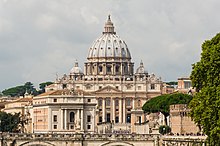| |
| Part of a series on the |
| Catholic Church |
|---|
 |
| Overview |
| |
This is an index of Catholic Church articles. Portals and navigation boxes are at the bottom of the page. For a listing of Catholic Church articles by category, see Category:Catholic Church (and its various subcategories and pages) at the bottom of the page.
Contents
Principal articles are:
- Catholic Church
- Glossary of the Catholic Church
- Outline of the Catholic Church
- Timeline of the Catholic Church
- Index of Vatican City-related articles
For various other lists, see "L" (below).
U | V
| W | X
|
